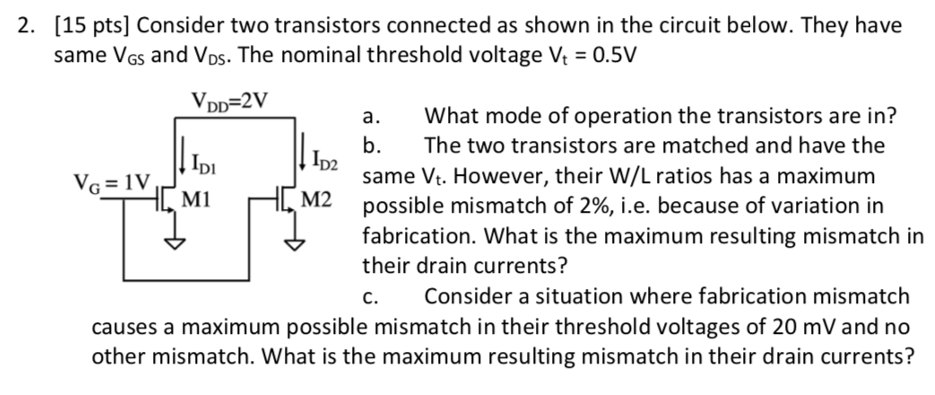Consider two transistors connected as shown in the circuit below. They have same VGS and VDS. The nominal threshold voltage Vt = 0.5 V a. What mode of operation the transistors are in? b. The two transistors are matched and have the same Vt. However, their W/L ratios has a maximum possible mismatch of 2%, i. e. because of variation in fabrication. What is the maximum resulting mismatch in their drain currents? c. Consider a situation where fabrication mismatch causes a maximum possible mismatch in their threshold voltages of 20 mV and no other mismatch. What is the maximum resulting mismatch in their drain currents?
